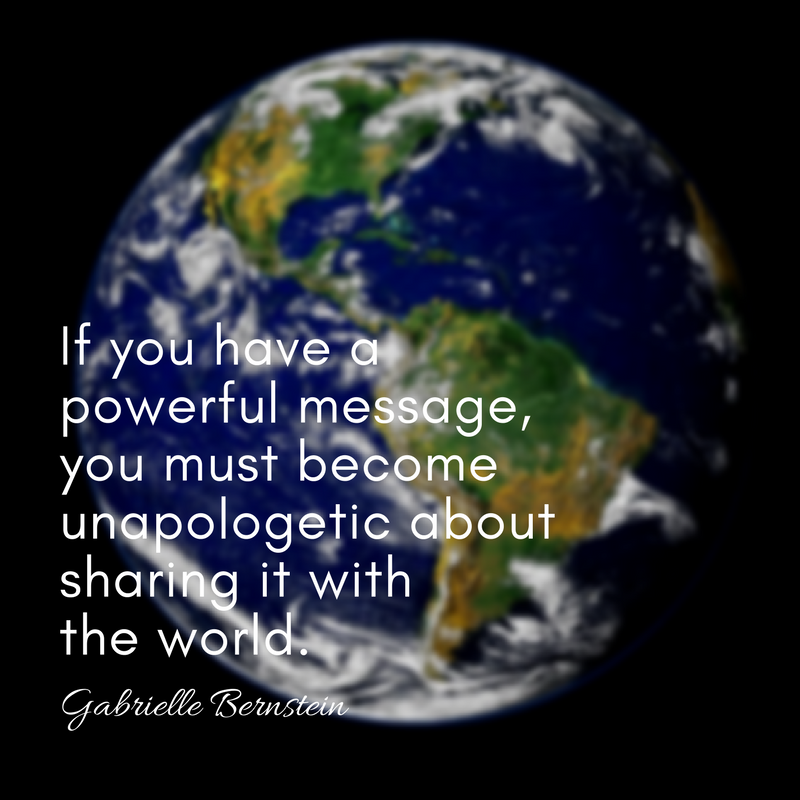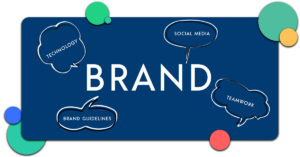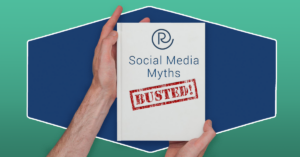When you’re building a brand, one of your first orders of business is getting your message in front of the right audience. From social media to word of mouth, you have so many tools at your disposal to accomplish this task, so where do you begin?
To answer this question, I wanted to share some insights from life coach, speaker and author Gabrielle Bernstein, who has built her business around sharing authentic messages. In following Bernstein’s work, I’ve learned that she focuses on serving her audience from a place of sharing, not pushing, a philosophy that every business would do well to adopt while creating a publicity plan. Here are five lessons you can learn from her.
Lesson #1: You Don’t Need to Be a PR Expert
Before creating her coaching business, Bernstein owned a public relations firm. If you’re thinking to yourself, “Well, of course she’s great at getting publicity then,” consider this: She was completely self-taught. Bernstein didn’t get a degree in public relations; she trained herself. She then leveraged the PR skills she learned to build the business she has today.
So if you’re feeling overwhelmed at the prospect of publicizing your business, take a deep breath. Start writing down the reasons you got started and the mission you have in sharing your products or services. Come from a place of helping others rather than serving yourself. What problem does your product or service solve? Start there.
This process will help you to clarify the message you want to share with your audience. Once you connect with the big-picture intention behind your brand, it’ll become easier to be your own publicist. Your message will be authentic, clear and well-received because it’ll come from your heart. You are the best one to share this message because you deeply care about it!
[bctt tweet=”#smm tip: Come from a place of helping others rather than serving yourself. #socialmediatips” username=”rallioHQ”]
Lesson #2: You Have a Message, So Share It
Bernstein frequently talks about being “unapologetic” about your message and putting your work out into the world. Remember, you are coming from a placing of sharing something exciting, not a place of selling or manipulating. The people who need to hear your message will be excited to hear it, so don’t keep it to yourself!
As she imagined her business, Bernstein thought about (actually, she meditated about) what her typical audience member looked like. She determined this person is a young woman living in the city with a salaried job who likely struggles with relationships and self-image. (It gets even more granular than that, but we’ll stop there to keep things simple.)
Once she had that person in mind, Bernstein was able to identify how her work could help this person and start sharing her message freely and unapologetically. Instead of trying to push her message or manipulate her audience into feeling a certain way, she could simply share the intention behind the work she was doing. She believed so powerfully in her message that she was able to share it without feeling salesy.

Lesson #3: Look for Your Audience in Unexpected Places
Having that clear picture of your audience like Bernstein did helps you discover where those people are spending their time. And she didn’t limit herself to thinking her audience only would be looking to health- and wellness-related resources.
In truth, Bernstein conceded, they were probably reading glossy fashion magazines and blogs about cutting their hair. Through the course of her group coaching sessions and social situations, she shared her desire to reach that audience. And within a month of beginning that conversation, she received an email from a client who, to her surprise, worked at Elle magazine. The client had pitched Bernstein to her team, and the magazine wanted to do a six-page feature on her.
Because she was willing to think “without a box,” as she puts it, Bernstein was able to take her message to those places where her audience was actually consuming media, even if glossy fashion magazines weren’t her initial target. As a result, Bernstein achieved some her greatest media placements early on, including regular spots on the Today show and sitting alongside Oprah.
[bctt tweet=”If you have a powerful message, you must become unapologetic about sharing it with the world. – @GabbyBernstein” username=”rallioHQ”]
Lesson #4: You Don’t Have to Master Every Form of Social Media
Facebook, Twitter, YouTube, Instagram, Snapchat … so many social media platforms, so little time, right?
I would say it’s important to have some kind of presence on the major platforms, because you don’t want people to see a ghost town when they happen upon your social pages. However, you’ll want to spend the most time on the couple of platforms that a) you love and b) your audience consumes regularly.
Bernstein, for one, loves providing videos, and her audience loves to watch them. Essentially, she created the space where her audience loves to congregate. For years, Bernstein would put out a video blog every Monday morning. The vlogs were free for her audience, easy to create and something she loved to do. Over time, Bernstein grew her newsletter audience because people watching her videos opted in. (Side note: Don’t be afraid to put out free content. It will help your overall marketing efforts as you build trust and confidence with your audience members.)
Instead of trying to be everywhere all of the time, focus your efforts in those areas that energize you and allow you to feel as though you’re genuinely serving your audience. From there, you’ll find that you’re thrilled to put out your work because it feels authentic, empowering and helpful (again, not salesy).
As Seth Godin puts it, “Ideas that spread win.” What are your ideas? And in what manner would you love to spread them?
[bctt tweet=”As @ThisIsSethsBlog puts it, ideas that spread win. What are your ideas? #smm” username=”rallioHQ”]
Lesson #5: Be Your Own Voice on Social Media
Bernstein has said that every post she creates comes from her, not from a third party posting in her name. You can decide how strict you want to be with this lesson, but the intention behind it is clear: to allow you to speak authentically and put a personality behind your brand. That way, people will trust you, and even your promotional posts won’t feel like sales pitches.
Consider this carefully crafted post from Bernstein where she subtly promotes her course via the hashtag #SpiritJunkieMasterclass while providing a thoughtful image quote to inspire her audience:
Getting so psyched for #SpiritJunkieMasterclass !! ? pic.twitter.com/nrL64evQuc
— Gabby Bernstein (@GabbyBernstein) May 30, 2017
Key takeaway: The message you’re sharing is always going to be the most well-received when it’s genuine, not canned. The second your audience senses you’re not being real with them, they’ll unfollow and move along to someone who is.
And that’s no way to promote yourself and build your brand, now is it?
For all the social media strategy and advice that exists out there, make sure you’re getting back to the basics and speaking from the heart. The more you share content that’s meaningful to your audience, the more your message will resonate and the larger your following will become.


